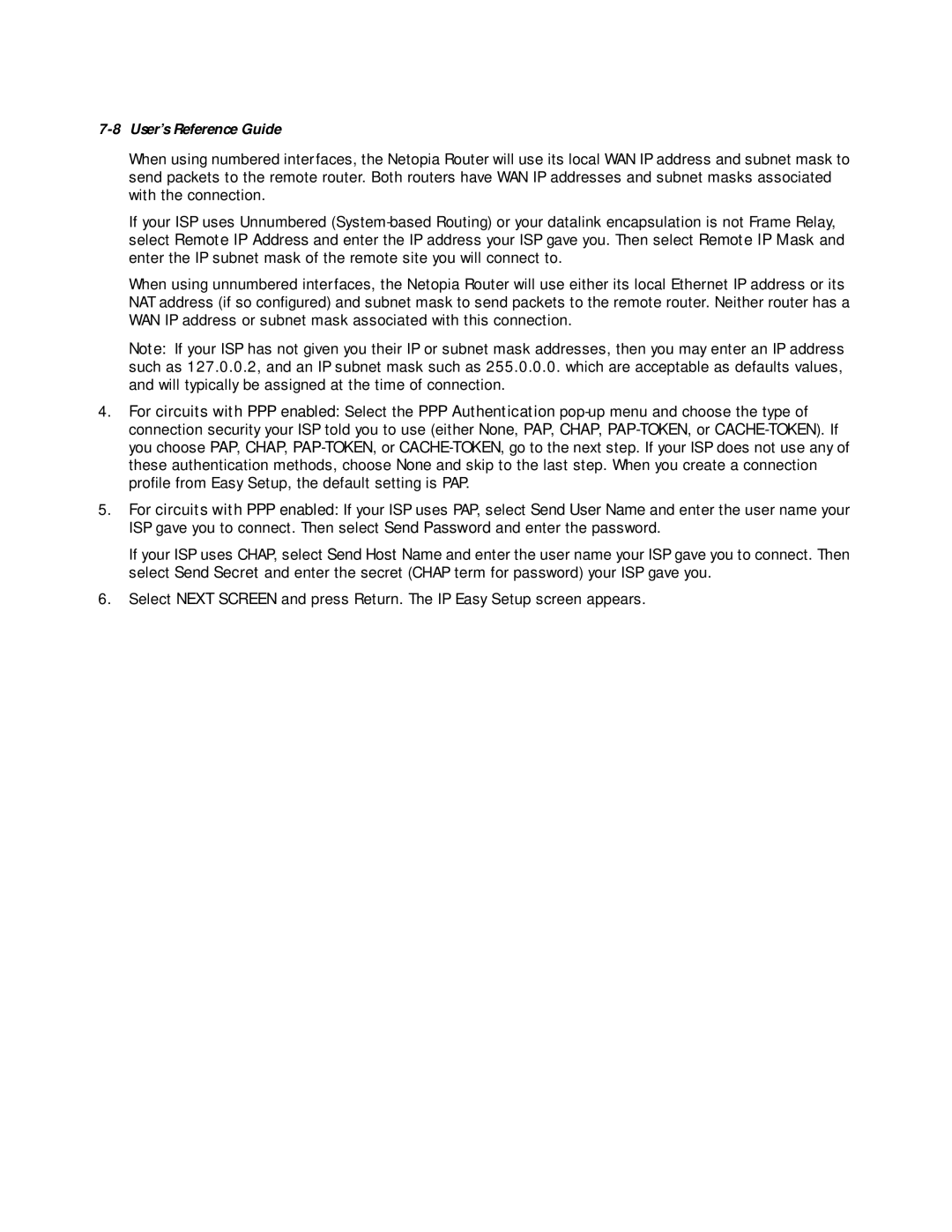7-8 User’s Reference Guide
When using numbered interfaces, the Netopia Router will use its local WAN IP address and subnet mask to send packets to the remote router. Both routers have WAN IP addresses and subnet masks associated with the connection.
If your ISP uses Unnumbered
When using unnumbered interfaces, the Netopia Router will use either its local Ethernet IP address or its NAT address (if so configured) and subnet mask to send packets to the remote router. Neither router has a WAN IP address or subnet mask associated with this connection.
Note: If your ISP has not given you their IP or subnet mask addresses, then you may enter an IP address such as 127.0.0.2, and an IP subnet mask such as 255.0.0.0. which are acceptable as defaults values, and will typically be assigned at the time of connection.
4.For circuits with PPP enabled: Select the PPP Authentication
5.For circuits with PPP enabled: If your ISP uses PAP, select Send User Name and enter the user name your ISP gave you to connect. Then select Send Password and enter the password.
If your ISP uses CHAP, select Send Host Name and enter the user name your ISP gave you to connect. Then select Send Secret and enter the secret (CHAP term for password) your ISP gave you.
6.Select NEXT SCREEN and press Return. The IP Easy Setup screen appears.
